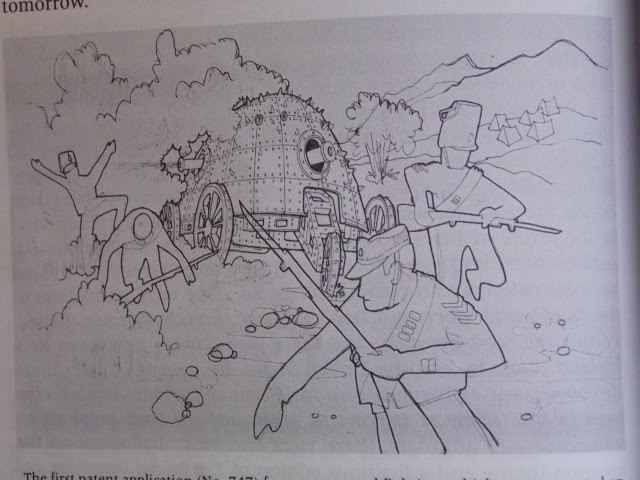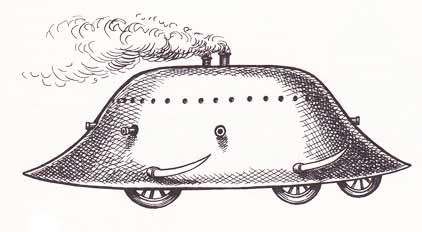


1855 Steam Powered Land Ram James Cowan maquette Saumur
English Translation
 |
Historique Voir ICI
History Click HERE
One could argue that the history of military vehicles harks back to the days of chariots and siege engines, machines that relied on animal or human power for their propulsion. However, these types of machines eventually became obsolete due to more sophisticated tactics in wars and battles and there was very little invention in terms of propulsion for hundreds of years until the advent of steam, which in itself only inspired the creation of a few military vehicles. One such example was James Cowan's steam 'battle car' of 1855, which never gained any popularity because it was deemed uncivilized ( Sic Lord Palmerson )
In 1855 James Cowan, a wealthy philanthropist, took out a patent for a steam driven locomotive land battery fitted with scythes to mow down infantry. It was a four wheeled armored vehicle armed with guns and looked like a giant. In 1813 Robert Fulton build the first steam propelled armored ship, the Fulton. She was of twin hull construction with a paddle wheel between the hulls, and a belt of timber protected her 58 inches in thickness. This monstrous vessel clearly showed that a more suitable system of propulsion and a less clumsy means of protection were needed. In 1836 the first was met by John Ericsson’s successful application of the screw propeller, and the second by substituting iron for wood. “Strangely enough, the British opposed to the introduction of steam ships, and when the Colonial Office asked the First Lord for a steam packet to convey mails for Malta to the Ionian Island, the following reply was received: their lordships felt it their bounden duty to discourage to the utmost of their ability the employment of steam vessels.
 |
| You must also understand that steam engine did little to promote the development of the tank. The power created by the engine was consumed by its own weight. |
Of course, despite strong ideas of the correct way to fight, the mechanization of the military was inevitable. The impact on nations' armies by technology started to become clear as more and more armies began using steam tractors to transport troops and weapons. However, petrol/gas engines were more efficient and versatile and by the start of the twentieth century guns and armor were being added to commercial automobiles. Armored cars were developed during the years leading up the the First World War, but after a year of fighting it became obvious, because of trench warfare making the war a very defensive affair, that these cars were useless - something better needed to be invented. Armies wanted new ways of traversing trenches, shell holes and barbed wire as it was the infantry that endured most of the fighting in these circumstances and took extremely heavy losses